“Professional decorators using conventional, petrochemical-based paints are 40% more likely to contract lung cancer.” – World Health Organisation
Contents
What are natural paints?
Natural paints or ‘eco-‘ paints are household paints, manufactured for interior and exterior uses, and also for floors and furniture.
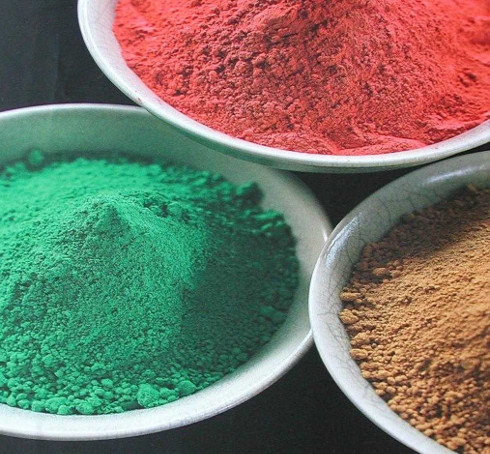
All paints contain:
- Pigment: the point of most paint is to put colour on a surface, even if that colour is white. Natural pigments are mostly mineral based, like iron oxides, or plant based, like onion skins. You have to make sure the type of pigment you are using will work with the binder you choose or you may end up with a different colour than you intended. This is especially true if you have any lime putty in your paint.
- Binder: the ingredient that transforms pigment into paint is the binder, because it glues the pigment onto the wall. If you just used pigment and water, for example, your paint would flake or dust off in no time because the water alone won’t glue the pigment to your wall. So you need a binder to attach it. There are a multitude of natural binders in your kitchen, including milk and eggs. Other binders include natural oils, such as tung or linseed oil, clay, gum arabic (from tree resin), beeswax, lime putty, cellulose (from flour), and beer (which some may argue is a waste of beer!). For a complete collection of recipes, we recommend The Natural Paint Book.
- Solvent: this ingredient gets a bad name because many solvents used in conventional paints off-gas and are super toxic, but really all the solvent does is thin the consistency of your paint to something you can apply. The solvent can even be water.
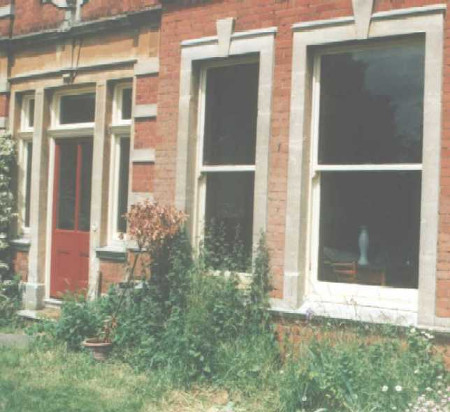
In eco-paints these tend to be natural rather than synthetic materials. Synthetic ingredients tend to be by-products of the petrochemical industry.
Defining a natural paint is very difficult. Manufacturers of natural paints generally try to minimize the overall environmental impact of their products. When checking the can for ingredients, there is a range of environmental criteria to consider (see below) and a few pitfalls to avoid. For example, ‘organic’ often doesn’t mean that ingredients are from plants grown without chemicals – just that they contain carbon. This is true of natural or synthetic paints and is not necessarily ‘eco’.
Also, natural doesn’t necessarily mean non-toxic. Arsenic and lead are toxic, but natural materials that have been used widely in paint manufacture. The common paint ingredient titanium dioxide is a naturally-occurring mineral, but there are huge environmental costs involved in its mining and energy-intensive purification process.
What are the benefits of natural paints?
Natural paints are durable, beautiful, and incredibly easy to make. Natural paints, whether bought or home-made, have the following environmental benefits:
- Non-toxic: Natural paints do not off-gas any chemical toxins into your air, so they are safer to use and safer for your long term indoor air quality; off-gassing ingredients in paint have been linked to dizziness, headaches, and asthma
- No petrochemicals: the ingredients in natural paints are derived from nature, like milk, eggs, clay, tree resin, beeswax, bug excretions, etc., rather than from non-renewable sources
- No hazardous by-products: the manufacturing process for conventional paints results in a variety of environmentally polluting byproducts; natural paints are derived from nature in the form of trees, milk, soil, and so on
- Less energy to make: the energy needed to make natural paints is YOU… mostly pouring and stirring!
- Breathable finishes: this means that the paints don’t make a plastic-like finish that traps vapour on either side, which can cause problems with moisture build-up (which can in turn mean mould or rotting)
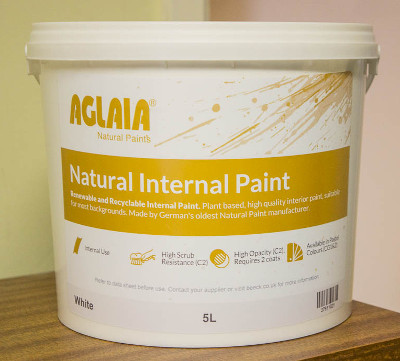
All solvents, whether natural or synthetic, contain VOCs (volatile organic compounds), which are given off when the solvent evaporates. VOCs are bad for human health when inhaled – they can be toxic and even carcinogenic. Natural paints tend to be low-VOC.
Natural paints also tend to contain a lower proportion of solvent; conventional gloss paint can be up to two-thirds solvent!
In combination with timber, stone, straw, lime, linseed oil putty and other natural materials, natural paints form the basis of a ‘natural house’ – whose materials are local, natural, recyclable, breathable and not harmful to human health.
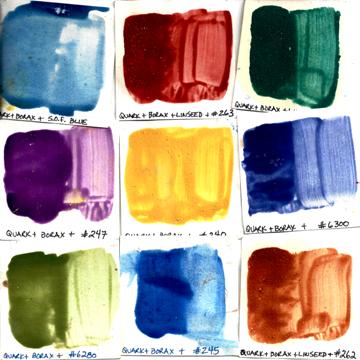
What can I do?
You can purchase manufactured natural paints, but they can be more expensive. You can also make your own natural paints with ingredients from nature and that you probably have in your kitchen. And then you control the ingredients and the colour. Before there were paint companies, people made their own paint using natural, non-toxic, often edible ingredients. Here are some ways to make your own natural paints from clay, milk (called casein paint) or even eggs.
When it comes to buying paints, coming to a decision about the environmental costs and benefits is quite complicated; a range of factors have to be taken into consideration. Different manufacturers do better in some areas than others; for example, waste from the production of Aglaia and Auro paints is totally compostable.
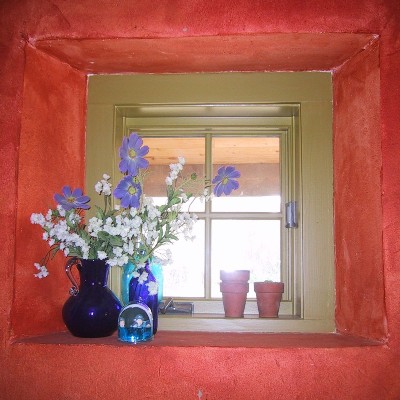
But the combination of factors to take into consideration mean that choosing a paint that’s truly ‘eco’ is difficult. Ethical Consumer offer this advice: ‘Generally, plant-based, water-borne paints are the best buy, followed by plant-based, solvent-borne ones with natural solvents. Try to avoid those using titanium dioxide.’
Natural paints are a bit more expensive per litre, but they go much further, and save time and money on maintenance in the long run; and what price would you put on your family’s health and a clean environment?
Natural paints usually have to be applied to bare wood, and so windows and doors have to be stripped back; this is a one-off though – just a light sanding is needed when re-painting in future. Waterproof paints cause problems when they inevitably crack or flake – water gets behind the paint and can’t escape, so your wood begins to rot; eco-paints laminate to the wood, so can’t crack, and are breathable so any moisture can escape.
Natural paints are also available for walls, and even for kitchens and bathrooms – waterproofing is provided by natural ingredients such as linseed oil.
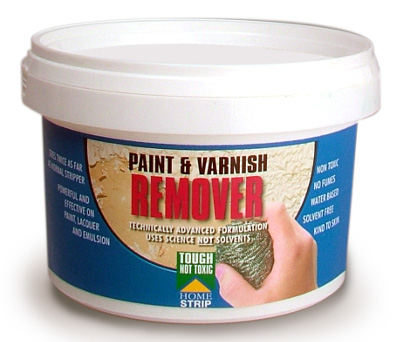
Go natural – don’t go for uPVC windows and doors. Apart from the fact that the manufacture of plastics is an environmental horror story, uPVC will eventually become pitted and discoloured in sunlight; well-maintained wooden doors and windows will last many times longer, and can be repaired easily.
You can also purchase natural wood waxes, varnishes, wood preservatives, and paint strippers.
Specialist(s)
Thanks to by Sigi Koko of Down to Earth Design for information.
The specialist(s) below will respond to queries on this topic. Please comment in the box at the bottom of the page.

Sigi Koko is the principal designer at Down to Earth Design, which she founded in 1998 to help her clients manifest their dreams of living in a natural, healthy home. She also teaches natural building workshops that empower her clients to contribute creatively during the construction of their own home. You can find out more about her work on her website and blog.

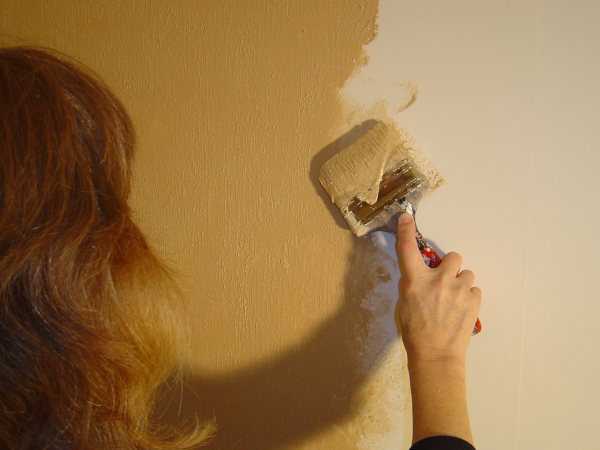
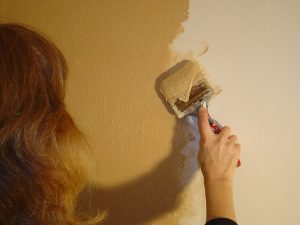
2 Comments
Hi Sigi. Have you tried making this natural plaster on your ovens. Just wondered the difference between using lime and wood ash? How does the ash impact on the colour? Is lime better for outdoor use and if so what time of lime is best?
linda royles This article actually covers paints…which are much thinner than plaster finishes. That said, for a cob oven, the best way to protect it in the long term is to build a roof over top. Particularly if you are in a climate that freezes in winter. Plasters and paints are meant for walls (ideally protected with a roof overhang); they are not suitable as roofing materials (where exposed to weather at the top). Ash turns lime materials into a pozzolan, so lime and wood ash are used for completely different applications. I’ve not heard of using ash in paints at all, so I can’t speak to that. For lime (whether paint or plaster), I always use a high calcium lime putty.